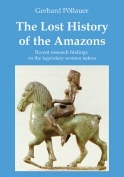 Is there more behind these famous warrior women than mere Fantasy?
Join in a virtual archaeological expedition to fathom this mysterious myth!
Is there more behind these famous warrior women than mere Fantasy?
Join in a virtual archaeological expedition to fathom this mysterious myth!
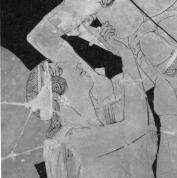
Characteristics of Amazons
How did the ancient Greeks see the Amazons?There is a lot of literature concerning the Amazons and there are numerous pictures of Amazons in Greek art, mostly vase-painting and sculpture.
=> Earliest Amazon picture
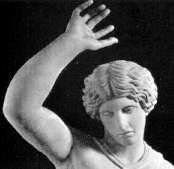
Amazons at the river Thermodon in northern Turkey
It has always been very clear to the ancient Greeks, where these famous Amazons once really had lived. Their home had been at the mouth of the river Thermodon in Northern Turkey. This localization is so definite that even now the river bears a Turkish name which leaves no doubt about its identity. Today the river is called Terme Çay. Çay is the Turkish name for river.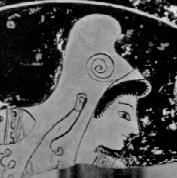
Amazons of Lemnos
In ancient tradition the island Lemnos (also Limnos) was much connected with the Amazons. The ancients called this island «dominated by women».
On the trails of the Lemnian Amazons
=> Research campaign 2002
=> Research campaign 2003
=> Research campaign 2006 => The Figure Stone of Hephaistia
Samothrace - Sacred island of the »Great Goddess«
=> Research campaign 2004 (PDF file - 587 KB)
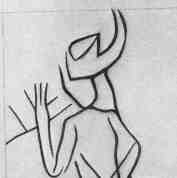
Amazons from Libya
There had been a second localization of the Amazons in ancient times. Long before the Amazons lived at the river Thermodon, there had been Amazons in Libya.
=> In Search of the Libyan Amazons' Homeland
=> Research campaign 2005 (PDF file - 621 KB)
=> The BERBERS - Ancient African people with woman-focused culture
 These two letters of the ancient Tuareg script (Libyco-Berber script) are vocalized »AMAZA«.
This word means »Motherly Love« in the language of the Tuareg.
These two letters of the ancient Tuareg script (Libyco-Berber script) are vocalized »AMAZA«.
This word means »Motherly Love« in the language of the Tuareg.
About this subject see:
The Lost History of the Amazons
Recent research findings on the legendary women nation
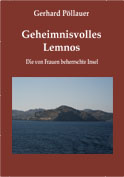
Geheimnisvolles Lemnos. Die von Frauen beherrschte Insel
Mysterious Lemnos. Island dominated by women
This book is only available in German.Matriarchy today
Matriarchal life form is still existing today, though very isolated. Due to cultural assimilation and growing globalization these last examples are doomed to extinction. It's a great pity because these remaining unique cultures are a living evidence that civilizations dominated by women are historical truth. Last concrete representatives are the Minangkabau of Sumatra and the Moso in the southwest of China.
The Moso in South China
A vivid picture of the matriarchy of the Moso people you get from the book:
Leaving Mother Lake. A Girlhood at the Edge of the World
by Yang Erche Namu and Christine Mathieu.
Besides being very entertaining the autobiographical story of the
Moso woman Erche Namu gives a profound insight into this definitely matriarchal people.
The German matriarchy researcher Heide Göttner-Abendroth has published her survey about the matriarchal
Moso in the book:
Matriarchat in Südchina (only available in German).
Together with a group of women she visited the isolated Moso people in 1993.
By interviewing the people they were able to trace the clear and obvious matriarchal structures.
At last there is an amazing detail: In the language of the Moso
the word »Ama« has the meaning »Mother«. This is a striking analogy to the
name of the warlike Amazons.
Well-fitting to this the Berbers in North Africa, which had been matriarchal in the past,
call themselves Amazigh in their own language. Because of this we reason that the very ancient
word Ama has the meaning »Mother« in its narrow sense. In the figurative sense it stands for »Matriarchal Culture«.
The Minangkabau people of West Sumatra
The Minangkabau are the largest and most stable matrilineal society in the world today.
The book by Peggy Reeves Sanday
Women at the Center: Life in a Modern Matriarchy gives a deep insight into the life of this unique people.
Sanday proves that the Minangkabau are truly a living and thriving matriarchal society.
=> Giresun Adasi Project
Diese Seite gibt es auch auf deutsch
Copyright © 1997-2025 Amazon Research Center

